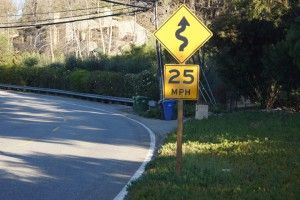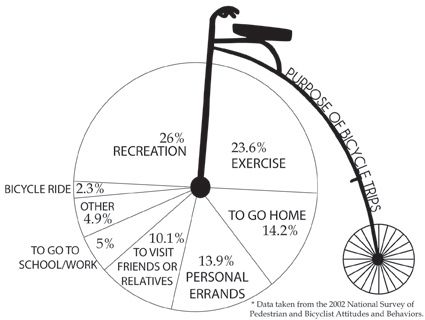Settled between arching mountains and a panoramic view of the Pacific Ocean, Malibu’s stretch of Pacific Coast Highway provides bicycle enthusiasts an unbeatably beautiful route to enjoy on a weekend bike ride. Yet, besides its beauty, the highway is also famous for its fatalities — more than a dozen of which have been cyclists attempting to navigate through infrastructure unsuitable for bicycles.

After a few years of discussions between cyclists and city officials, the Malibu City Council voted Monday night on Jan. 23 to pursue the “Bicycle Friendly Community” designation from the League of American Bicyclists. To be designated “bike friendly,” Malibu must address important issues outlined by the League in the application process, such as making streets more accessible and convenient for cyclists, educating the public on bike safety and traffic laws and working significantly with the local law enforcement to promote safety on the road.
“I believe that bicycle transportation is important and vital for our city and our entire area,” Mayor Laura Rosenthal wrote in an email.
The initiative marks a significant stepping stone in promoting bicycle riding in Malibu, yet despite its intentions to increase bicycle safety, its impact will be considerably limited. PCH, the main (and often the only) way to get from place to place in Malibu, does not fall under the control of the city, but under the California Department of Transportation (Caltrans), meaning that the city of Malibu alone cannot change or alter any part of it.
Rosenthal, who did not support the initiative, wrote that the city was recently awarded a grant of $900,000 to study safety on PCH with Caltrans. The grant will allow the city to gauge what problems should be focused on for the future.
“I believe that we must first decide what will work for PCH and Malibu and then begin to develop programs to work within those parameters,” she said, though the city has not yet outlined a specific action plan.
Over the last decade PCH has had its fair share of cyclist injuries and fatalities, which are usually caused by the lack of bike lanes. Utility or construction work often forces cyclists into traffic and poorly parked cars. Accidents such as one in 2005, when two cyclists were forced into the traffic lane near John Tyler Drive by concrete construction barriers and were killed by the impact of a catering truck, are examples of avoidable tragedies that the bicycling community hopes this program will address.
“I know four people that have died this year,” said Paul Phillips, an Inglewood resident who frequently rides his bike with friends on PCH. “None in Malibu, but two were on the canyon roads — Las Flores and Las Virgenes. The driver swerved to avoid hitting another car … and hit him instead.”
Cyclists, Phillips said, love riding in Malibu because there are few stop signs, “and it’s beautiful of course.” He has similarly run into the same problems that have killed other cyclists: getting forced into traffic by unannounced construction, poorly parked cars and cars looking for beach parking swerving into the shoulder without signaling.

“People do some crazy things for parking in Malibu,” Phillips said.
Another cyclist and current member of the United States Navy Triathlon Team, Dan Frost said simply, “Malibu isn’t for inexperienced riders. Not because the terrain is difficult but because of the safety hazards.”
Frost recommends riders to go north up to Point Mugu or through the canyon where bike lanes and driver-rider awareness makes things safer. “You’ll usually see biking groups 10 to 15 strong charging the hills around Malibu Lake [in Westlake],” he said.
Currently, two other Southern California cities, Long Beach and Huntington Beach, have been able to achieve bronze-level “Bicycle Friendly” designation from the League of American Bicycles despite the fact that PCH runs through major areas of each city. Yet these cities have many other routes other than PCH for cyclists to navigate, which is one luxury Malibu doesn’t have.
“Malibu is 27 miles of scenic beauty,” Frost said. “You can only loop into a couple neighborhoods for a few miles, but in order to get an actual workout you have to get back on the highway.”
Nevertheless, the program to become a “Bicycle Friendly Community” set forth by the League of American Bicyclists includes a plan much broader than just highway safety. The plan is structured around the League’s “5 Es:” Engineering, Education, Encouragement, Enforcement, and Evaluation. The blueprint available on the League’s website details each “E;” only one (Engineering) evaluates the quality of the infrastructure.
Though the League’s blueprint cites physical environments as one of the most determining factors in getting people on bikes, the other aspects of the program play an important role in changing the mentality of the community and its government.
The League insists that educating motorists, cyclists and even young kids about bicycle safety provides an important foundation for members of the community to understand the positive impact of bicycling. Encouraging participation in events and programs such as Bike to Work Day and National Bike Month, or even participating in an advocacy group, helps to build a culture where bicycling is encouraged and is therefore more successful, as the League’s blueprint explains.
In addition, working with law enforcement to keep citizens safe and creating a decades-long plan to improve the city programs and infrastructure are important elements for Malibu to address in the coming years. According to the League’s rankings, California currently ranks twentieth out of the 50 states as the most bike friendly state (Washington, Maine and Wisconsin are the top three).
Nevertheless, Malibu is adding its name to more than 30 cities across the state to pursue the bicycle friendly designation.
“Being a cyclist is about the community and the fitness,” said Malibu resident and former Olympic cyclist Lydia Graham. “There are a ton of riders in Malibu who are living healthy lifestyles, which is great, but PCH just isn’t up to par for [bike] training.”
Cyclists and city council members agree that, in order to be affective, this initiative will need to balance with the $900,000 Caltrans grant to improve conditions throughout all of Malibu, PCH and neighborhood streets.

